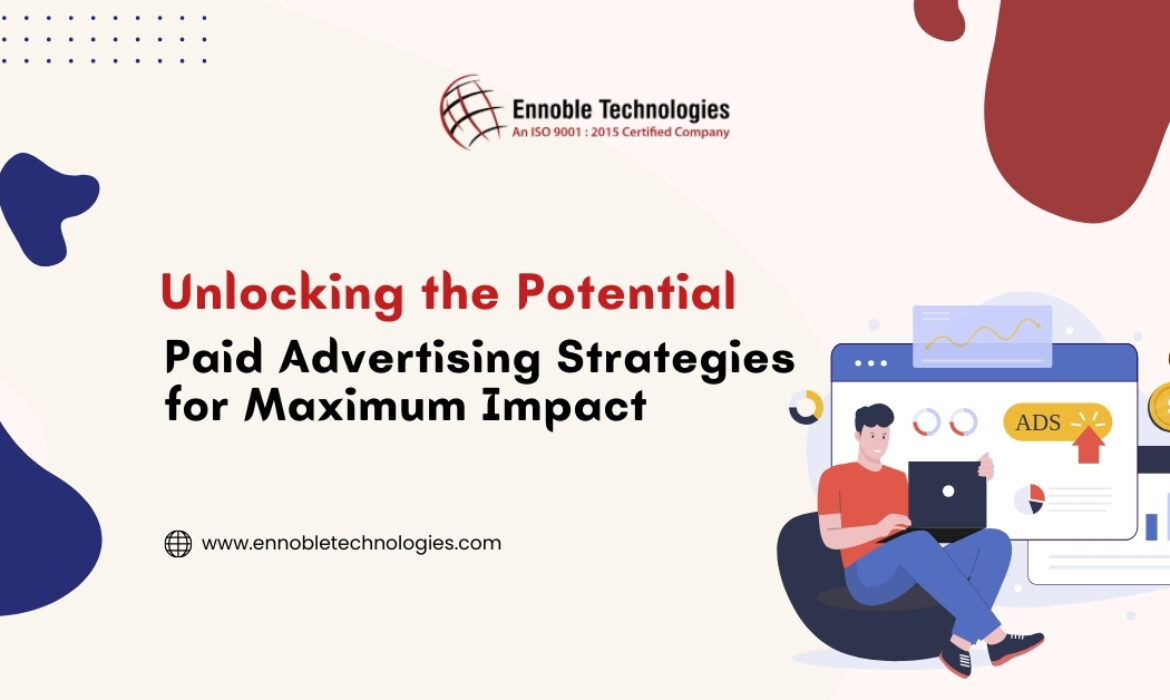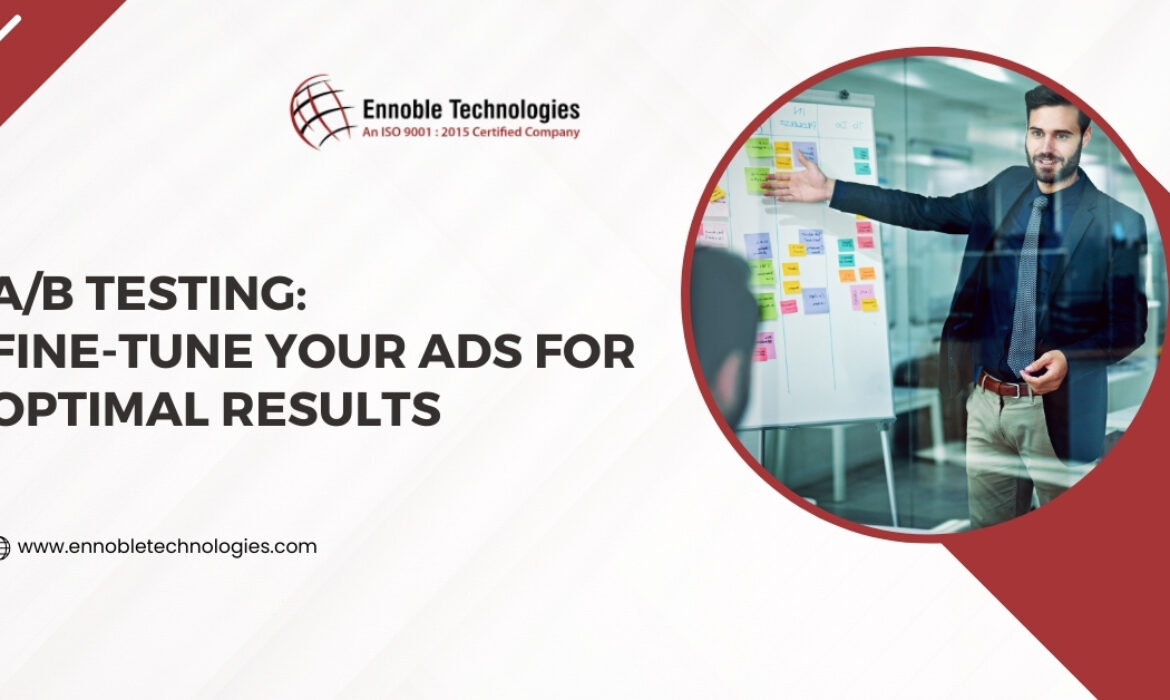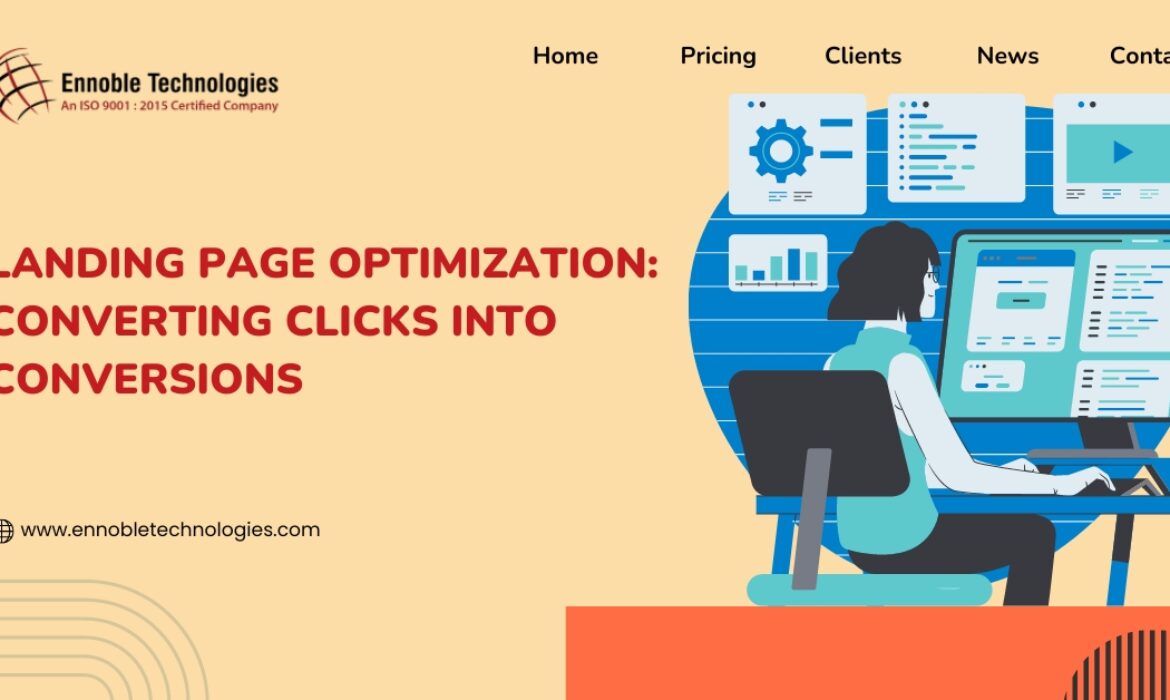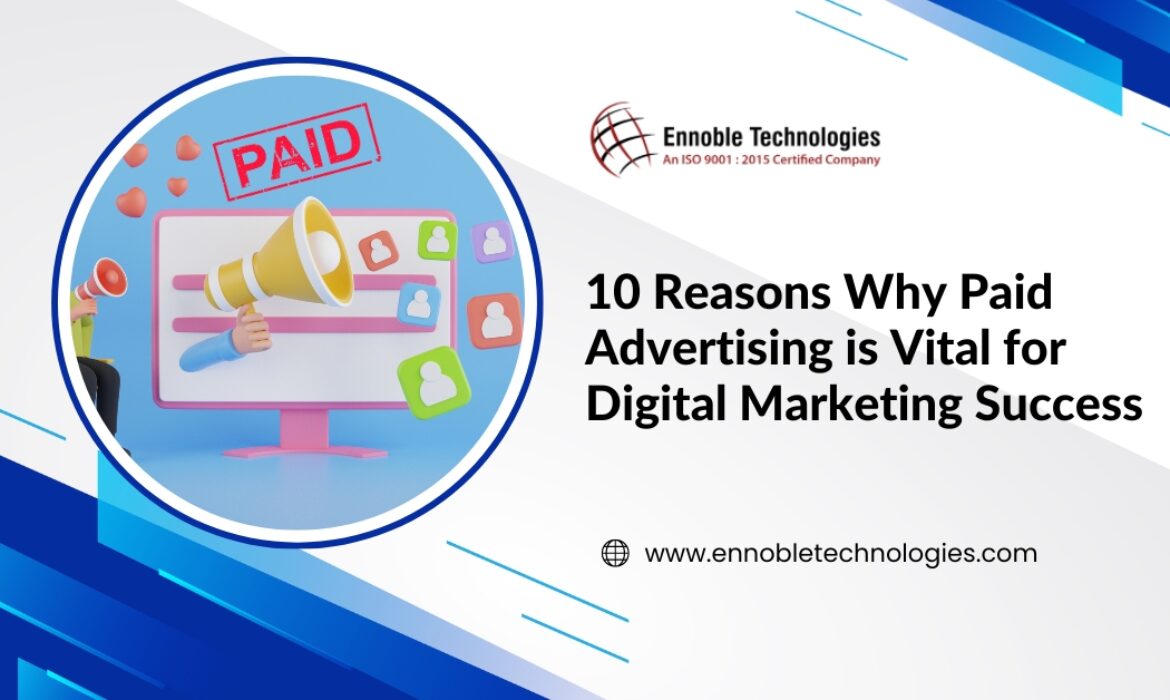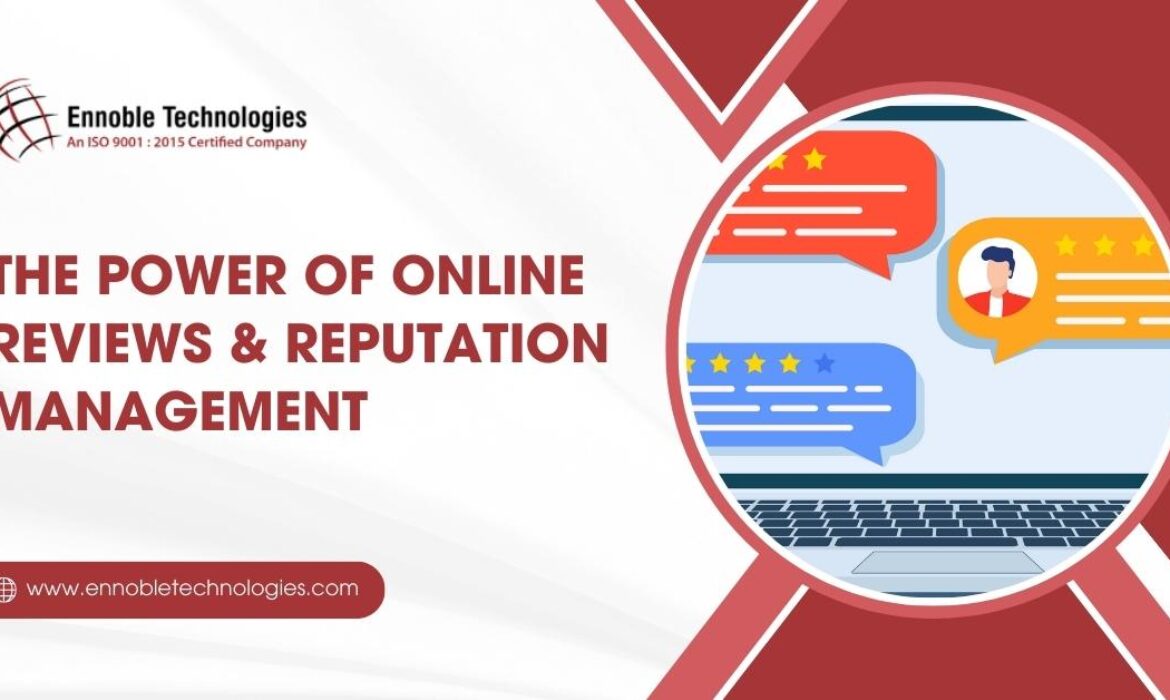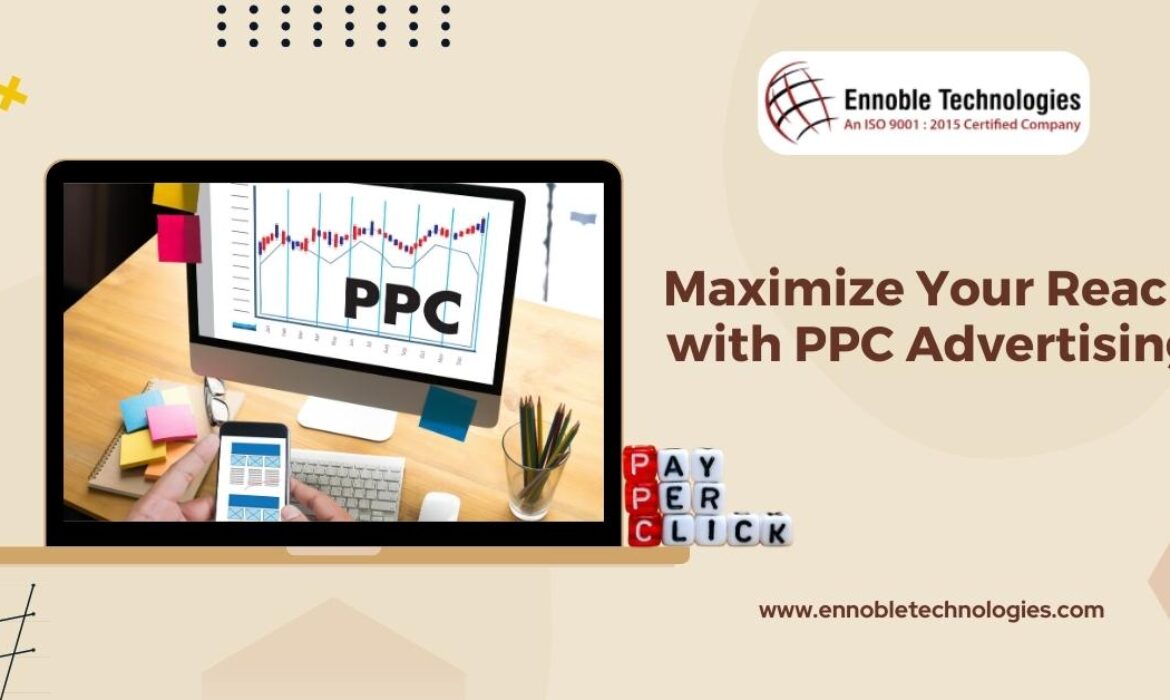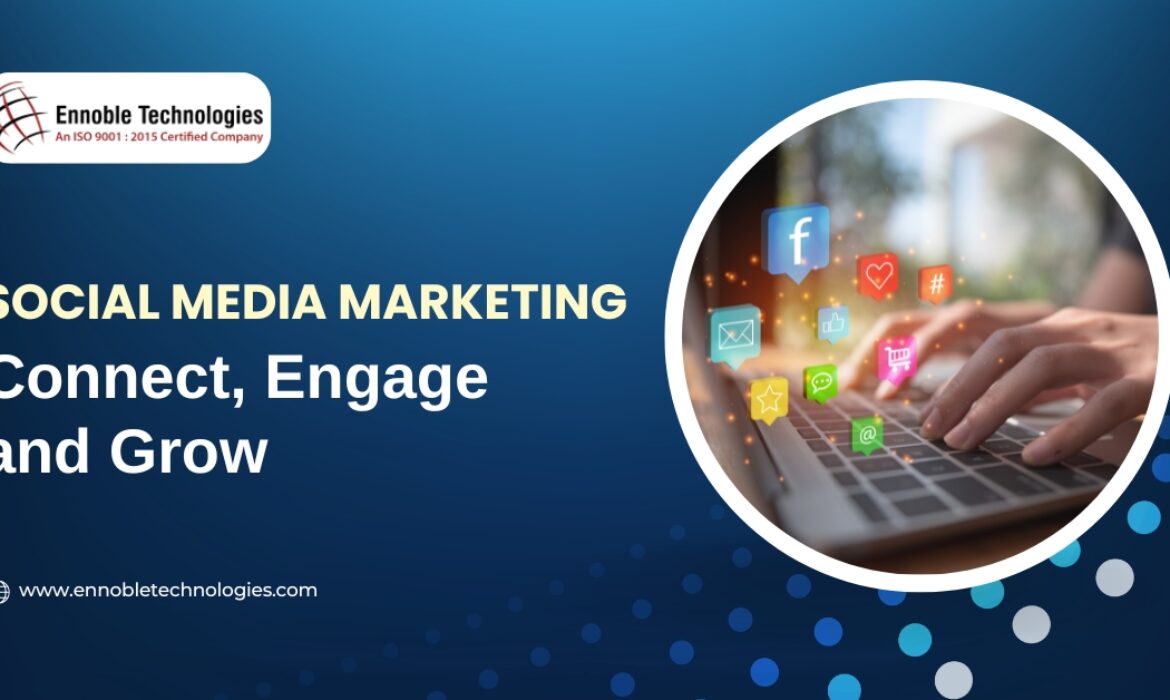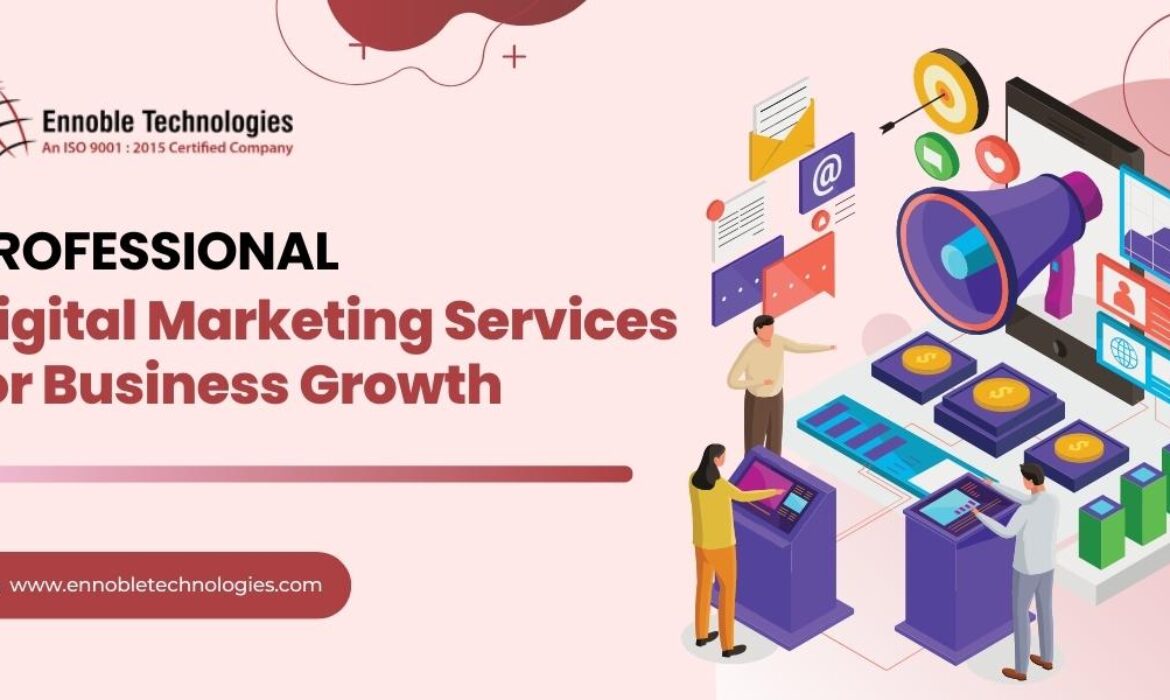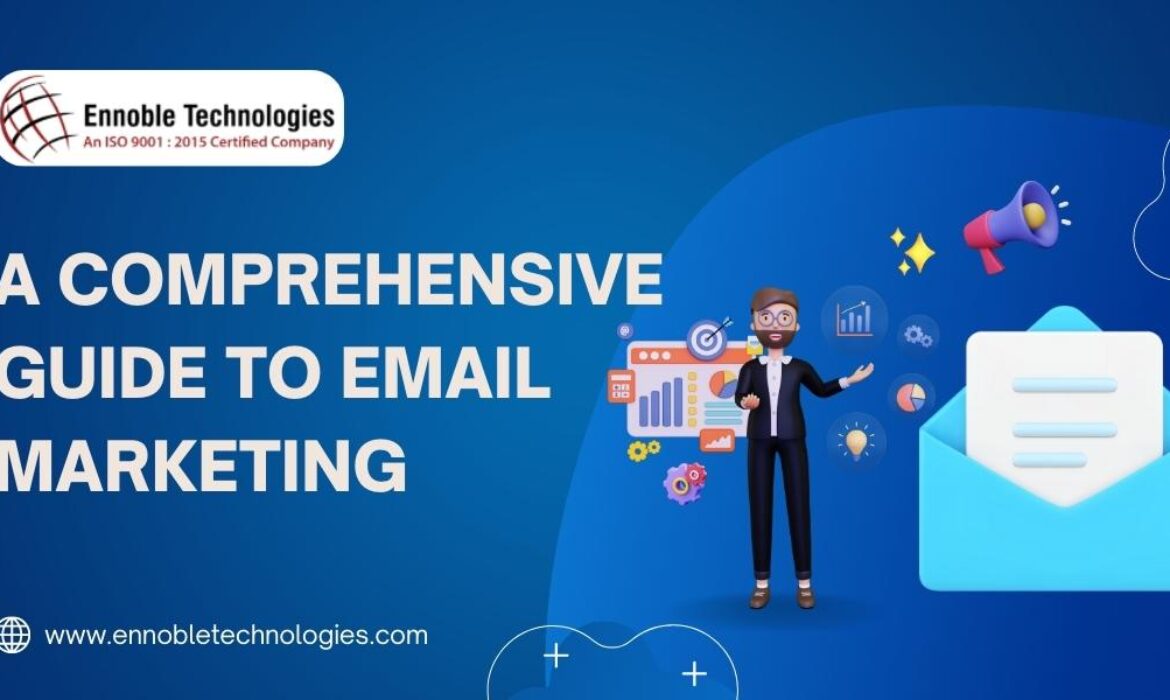Unlocking the Potential: Paid Advertising Strategies for Maximum Impact
Understanding the Power of Paid Advertising
Paid advertising has become an indispensable tool in the digital marketing landscape. It’s a strategic approach that enables businesses to reach their target audience effectively, garnering immediate visibility and engagement. When executed correctly, paid advertising can yield substantial returns on investment (ROI) and significantly impact brand growth.
The Evolving Dynamics of Paid Advertising
In recent years, the realm of paid advertising has witnessed a remarkable evolution. Platforms like Google Ads, social media channels (such as Facebook, Instagram, and LinkedIn), and other digital networks have provided diverse and sophisticated avenues for businesses to promote their products or services. With each platform offering distinct ad formats and targeting options, crafting a tailored strategy for maximum impact has become both an art and a science.
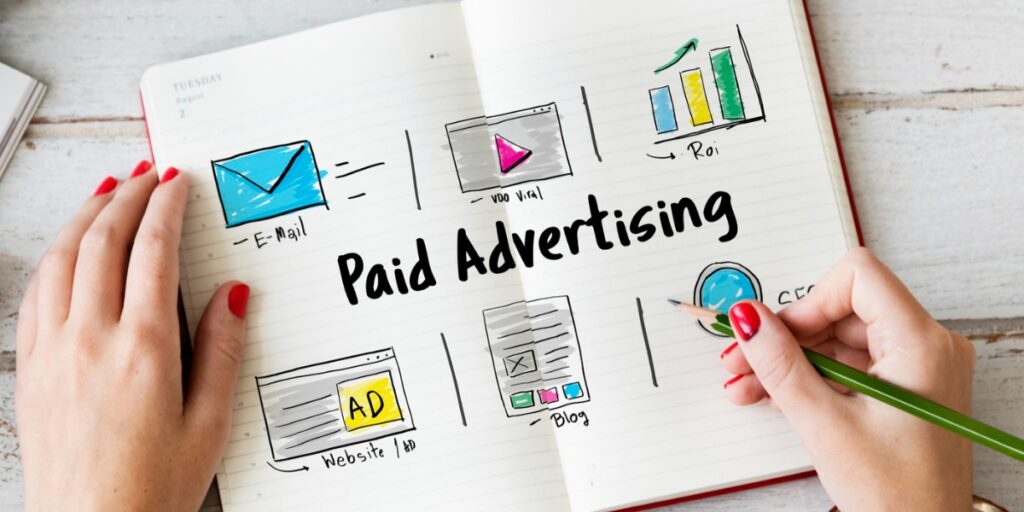
Crafting a Comprehensive Paid Advertising Strategy
- Defining Clear Objectives: Establishing precise goals is the cornerstone of any successful paid advertising campaign. Whether it’s driving website traffic, boosting sales, or enhancing brand awareness, clarity in objectives guides the entire strategy.
- Audience Segmentation and Targeting: Understanding your audience demographics, behaviors, and preferences is pivotal. Leveraging this insight allows precise targeting, ensuring your ads reach those most likely to convert.
- Ad Content and Creatives: Compelling ad content that resonates with the audience is paramount. Utilize persuasive copy, captivating visuals, and engaging CTAs (Call to Actions) to drive user action.
- Optimizing Landing Pages: Ensure that the landing pages your ads direct to are aligned with the ad content and offer a seamless user experience. Optimized landing pages increase conversion rates.
- Monitoring and Analysis: Continuous monitoring and analysis of ad performance provide invaluable insights. Metrics like click-through rates (CTR), conversion rates, and cost per acquisition (CPA) should guide ongoing refinements.
Benefits of a Well-Crafted Paid Advertising Strategy
A strategically devised paid advertising campaign presents a multitude of benefits for businesses:
- Immediate Visibility: Unlike organic methods, paid advertising delivers immediate visibility to the target audience, expediting brand recognition and exposure.
- Precise Targeting: Detailed audience segmentation enables precise targeting, ensuring that ads are shown to those most likely to convert, optimizing ad spend.
- Measurable ROI: With robust analytics tools, measuring the effectiveness of paid campaigns is precise. This data-driven approach allows for continuous refinement and improvement.
- Enhanced Brand Awareness: Consistent visibility across platforms aids in strengthening brand awareness and recall among the audience.
Key Takeaways
Crafting an effective paid advertising strategy involves a meticulous blend of data analysis, creativity, and continuous optimization. Understanding your audience, setting clear objectives, crafting compelling content, and vigilant monitoring are vital components that contribute to maximum impact.
Harnessing the Potential of Google Ads
Google Ads stands tall among the diverse platforms available for paid advertising. Its expansive reach and diverse ad formats make it a powerhouse for businesses aiming to amplify their online presence.

Ad Types and Customization
Google Ads offers various ad types tailored to different business goals:
- Search Ads: Displayed at the top of search engine result pages, these ads target users actively searching for specific keywords.
- Display Ads: These visually appealing ads appear across the Google Display Network, spanning a wide array of websites and apps.
- Video Ads: Capitalize on the popularity of YouTube and engage users through compelling video content.
- Shopping Ads: Ideal for e-commerce, these showcase product images, prices, and businesses’ names right at the top of Google searches.
Customization within Google Ads allows for precise targeting, scheduling, and budget allocation. Leveraging features like location targeting, ad extensions, and remarketing can significantly enhance ad performance.
Maximizing Social Media Platforms
The landscape of social media platforms offers a diverse range of opportunities for paid advertising:
- Facebook Ads: With its extensive user base and detailed targeting options, Facebook Ads enable businesses to reach specific demographics effectively.
- Instagram Ads: Leveraging visually engaging content, Instagram Ads tap into the platform’s highly visual nature, capturing user attention.
- LinkedIn Ads: Ideal for B2B marketing, LinkedIn Ads offer precise targeting options based on job titles, industries, and professional demographics.
Each social media platform provides unique ad formats and targeting options. Crafting tailored ad campaigns optimized for each platform maximizes audience engagement.
Budget Allocation and Optimization
A crucial aspect of paid advertising lies in effective budget allocation and continuous optimization. Distributing budgets across different platforms and ad types based on performance analysis is key. Constantly testing ad variations, refining targeting parameters, and optimizing landing pages contribute to maximizing ROI.
Understanding Your Audience: Key to Success
Before diving into any advertising venture, comprehending your audience is pivotal. Conduct thorough research to identify their demographics, preferences, and behaviors. Utilize analytics tools to glean insights and craft targeted campaigns that resonate with your audience’s needs and interests. Aligning your message with their desires enhances engagement and conversion rates.
Crafting Compelling Ad Copies
Captivating ad copies play a crucial role in capturing audience attention. Craft compelling, concise, and persuasive copies that highlight your unique value proposition. Incorporate relevant keywords naturally to boost search visibility and entice potential customers. A clear and compelling call-to-action (CTA) prompts users to take the desired action, driving conversions.

Harnessing the Power of Visuals
In the realm of paid advertising, visuals wield immense influence. Utilize captivating images, videos, or infographics that complement your message. Visual content not only grabs attention swiftly but also enhances comprehension and retention. Ensure consistency in branding across visual elements to reinforce brand identity and foster trust.
Strategic Bid Management and Budget Allocation
Optimizing bids and allocating budgets strategically can significantly impact your campaign’s performance. Employ data-driven insights to adjust bids based on ad performance, ensuring maximum ROI. Allocate budgets wisely across platforms and campaigns, focusing on high-performing channels to maximize impact.
A/B Testing for Continuous Improvement
Continuous refinement is key to sustained success in paid advertising. Implement A/B tests to experiment with various elements such as headlines, visuals, or CTAs. Analyze the results meticulously to identify the most effective components and iterate for ongoing improvement.

Embracing Diverse Advertising Platforms
Diversifying your advertising platforms mitigates risk and expands your reach. Explore diverse platforms like Google Ads, social media ads, or native advertising to tap into varied audience segments. Tailor your approach based on platform-specific nuances to optimize results.
Tracking and Analyzing Performance Metrics
Monitoring and analyzing performance metrics are fundamental to refining your strategies. Track key metrics such as click-through rates, conversion rates, and return on ad spend (ROAS). Use these insights to fine-tune your campaigns, emphasizing high-performing aspects for optimal results.
Conclusion
Mastering paid advertising strategies demands a blend of creativity, data-driven insights, and continuous optimization. By understanding your audience, crafting compelling content, leveraging visuals, and refining strategies based on data analysis, you can propel your advertising campaigns to new heights of success. Embrace experimentation, adapt to changes, and stay abreast of industry trends to stay ahead in the competitive landscape of paid advertising.
Also Read: A/B Testing: Fine-Tune Your Ads for Optimal Results – Ennoble Technologies
A/B Testing: Fine-Tune Your Ads for Optimal Results
Introduction to A/B Testing in Advertising
In the world of digital marketing, A/B testing stands as a cornerstone technique for optimizing advertising campaigns. This method involves comparing two versions of an ad to see which performs better. It’s like a scientific experiment for your marketing efforts, offering clear insights into what resonates with your audience.
What is A/B Testing?
A/B testing, also known as split testing, is a method where two versions of an ad (A and B) are compared against each other to determine which one yields better results. This approach helps in fine-tuning various elements of advertising, such as ad copy, images, or call-to-action buttons.
The Importance of A/B Testing in Digital Marketing
In the fast-paced digital landscape, understanding what works and what doesn’t is crucial for success. A/B testing serves as a valuable tool for marketers to enhance ad performance, ensuring that every dollar spent on advertising is used effectively.

Planning Your A/B Test for Maximum Impact
Before jumping into A/B testing, it’s essential to have a clear plan in place. This involves setting objectives and identifying the metrics that will measure the success of your test.
Setting Clear Objectives
Define what you want to achieve with your A/B test. Are you looking to increase click-through rates, boost conversion rates, or improve engagement? Having clear goals will guide your testing process and help in evaluating results effectively.
Identifying Key Performance Indicators (KPIs)
Key Performance Indicators are metrics that will help you assess the performance of your ads. These might include click-through rates, conversion rates, engagement rates, or any other relevant metric that aligns with your objectives.
Designing Effective A/B Tests
Creating an effective A/B test involves crafting variations of your ad that are distinct yet still align with your brand message.
Crafting Compelling Ad Variations
Develop variations of your ad that test different elements. This might include changing the headline, the image, the call-to-action, or even the overall layout of the ad. Remember, the changes should be significant enough to measure but not so drastic that they alter the ad’s core message.
Choosing the Right Audience Segments
Targeting the right audience is crucial in A/B testing. Segment your audience based on demographics, interests, or past behaviors to ensure that your test results are relevant and actionable.
Executing Your A/B Test
Once your test is designed, it’s time to put it into action.
Implementing the Test on Your Platform
Choose the platform where you’ll conduct your A/B test, whether it’s a social media platform, a search engine, or your website. Ensure that the test is set up correctly to avoid any biases in the results.
Timing and Duration of A/B Testing
Decide on the duration of your test. A/B tests typically run for a few days to a few weeks, depending on the traffic and the statistical significance you wish to achieve.
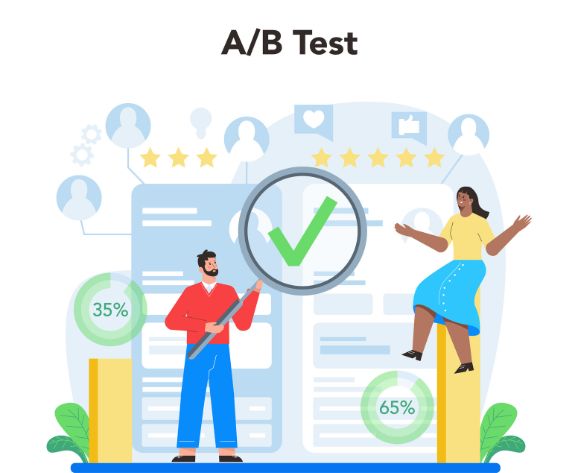
Analyzing A/B Test Results
After running the test, it’s time to dive into the data.
Interpreting Data and Metrics
Analyze the results by looking at the metrics you’ve set. Which version of the ad performed better? What does the data tell you about your audience’s preferences?
Making Data-Driven Decisions
Use the insights gained from your A/B test to make informed decisions about your advertising strategy. Implement the winning elements into your ads and consider further testing to refine your approach.
Optimizing Ads Post A/B Testing
Post-testing, it’s essential to apply the learnings to your future ads.
Refining Ad Copy and Design
Incorporate the successful elements from your A/B test into your ad copy and design. This might involve tweaking your headlines, images, or the overall message of your ads.
Target Audience Adjustment
Based on the test results, you may need to adjust your target audience. Perhaps a different demographic responded more positively to your ad, suggesting a new direction for your targeting strategy.
Advanced A/B Testing Techniques
To further enhance your A/B testing strategy, consider exploring advanced techniques.
Multivariate Testing Explained
Multivariate testing is like A/B testing on steroids. Instead of comparing two versions of an ad, you test multiple variations simultaneously. This approach is more complex but can provide deeper insights into how different elements interact with each other.
Leveraging AI in A/B Testing
Artificial Intelligence (AI) is transforming A/B testing by automating the process and providing more sophisticated analysis. AI can help identify patterns and insights that might be missed in manual analysis.

Common Pitfalls in A/B Testing and How to Avoid Them
Even the best-planned A/B tests can run into issues. Be aware of common pitfalls and how to avoid them.
Avoiding Bias in Test Design
Ensure that your test design is unbiased. This involves randomizing the assignment of variations to different audience segments and ensuring that external factors don’t influence the results.
Ensuring Statistical Significance
Statistical significance is key in A/B testing. Make sure that your sample size is large enough and the test duration is adequate to obtain statistically significant results.
Case Studies: Successful A/B Testing Campaigns
Learn from the best by examining case studies of successful A/B testing campaigns. These examples can provide valuable insights and inspiration for your own tests.
Analyzing Top Brands’ Strategies
Look at how top brands in various industries have utilized A/B testing to optimize their ads. Understand the strategies they employed and the results they achieved.
Integrating A/B Testing with Overall Marketing Strategy
A/B testing shouldn’t exist in a vacuum. It needs to be integrated with your overall marketing strategy.
Aligning Testing with Business Goals
Ensure that your A/B testing efforts align with your broader business goals. This includes not only improving ad performance but also contributing to overall business growth and customer satisfaction.
Future Trends in A/B Testing and Ad Optimization
Stay ahead of the curve by understanding the future trends in A/B testing.
Emerging Technologies and Their Impact
Technological advancements, such as AI and machine learning, are shaping the future of A/B testing. Stay informed about these trends and how they might impact ad optimization.
Conclusion: The Continuous Journey of Ad Optimization
A/B testing is an ongoing process of learning and improvement.
Summarizing Key Takeaways
Recap the main points covered in the article, highlighting the importance of A/B testing in optimizing ads.
Future Directions in A/B Testing
Discuss the evolving landscape of A/B testing and how marketers need to adapt to stay ahead.

FAQs
Q: What is the primary goal of A/B testing in advertising?
A: The primary goal of A/B testing is to determine which version of an ad performs better, helping advertisers make data-driven decisions to improve their campaigns.
Q: How long should I run an A/B test for accurate results?
A: It’s recommended to run an A/B test for at least one to two weeks to ensure you collect enough data for accurate analysis.
Q: Can A/B testing be applied to social media advertising?
A: Yes, A/B testing can be applied to various advertising channels, including social media. It’s a versatile method to optimize ad performance.
Q: Is A/B testing suitable for small businesses with limited budgets?
A: Absolutely. A/B testing can be valuable for businesses of all sizes. It allows you to allocate your budget more efficiently and get the most out of your advertising spend.
Q: What tools or platforms can help me conduct A/B tests?
A: There are various tools and platforms available for A/B testing, including Google Ads, Facebook Ads Manager, and third-party software like Optimizely and VWO.
Q: Can I A/B test multiple elements of an ad simultaneously?
A: While it’s generally recommended to test one element at a time for accurate insights, advanced A/B testing may involve multivariate testing, which assesses multiple elements simultaneously.
Also Read: Landing Page Optimization: Converting Clicks into Conversions – Ennoble Technologies
Landing Page Optimization: Converting Clicks into Conversions
In the vast landscape of the internet, your website’s landing page is your digital storefront. It’s the first point of contact for potential customers and can make or break your online success. While getting clicks is essential, converting those clicks into meaningful actions is the true goal. This article will delve deep into the world of landing page optimization, providing you with valuable insights and strategies to turn those clicks into conversions.
The Significance of Landing Page Optimization
Before we dive into the nitty-gritty details of optimizing your landing page, let’s establish why it’s so crucial in the first place. Your landing page serves as a bridge between your marketing efforts and actual conversions. Whether your goal is to sell products, collect leads, or simply convey information, a well-optimized landing page can significantly impact your bottom line.

Understanding Your Audience
To optimize your landing page effectively, you must first understand your audience. Who are the people clicking on your page, and what are their expectations? Are they looking for information, a product, or a service? Knowing your audience’s needs and preferences is the foundation of a successful landing page.
Crafting Compelling Headlines
Your landing page’s headline is often the first thing visitors see, and it’s your chance to make a strong first impression. Use bold and engaging headlines that immediately convey the value proposition. Ensure that your headline directly addresses the problem your product or service solves.
Visual Appeal and User Experience
Once you’ve captured your audience’s attention with a compelling headline, it’s time to focus on the visual appeal and user experience of your landing page.
Clean and Uncluttered Design
A cluttered and confusing landing page is a conversion killer. Keep the design clean and straightforward. Use bold fonts, contrasting colors, and ample white space to make your content easily digestible.
Mobile Responsiveness
In today’s mobile-centric world, a responsive design is non-negotiable. Ensure that your landing page looks and functions flawlessly on all devices, from smartphones to desktops.
Call to Action (CTA)
The heart of any landing page is its call to action. Your CTA should be clear, concise, and compelling.

Use Action-Oriented Language
Words like “Buy Now,” “Sign Up Today,” or “Get Started” instill a sense of urgency and action. Make your CTA impossible to ignore.
Positioning Matters
The placement of your CTA button is critical. It should be prominently displayed, typically above the fold, where visitors don’t have to scroll to find it.
Social Proof and Trust Signals
In an era of online skepticism, trust is a valuable commodity. Utilize social proof and trust signals to reassure visitors that they’re making the right choice by engaging with your landing page.
Customer Reviews and Testimonials
Displaying genuine customer reviews and testimonials can significantly boost your credibility. Ensure that they are prominently featured on your landing page.
Security Badges and Certifications
If your landing page involves sensitive information or transactions, prominently display security badges and certifications to put visitors’ minds at ease.
A/B Testing and Continuous Improvement
Even after you’ve optimized your landing page, the work is not done. Regularly conduct A/B tests to determine what elements are working and what needs improvement.
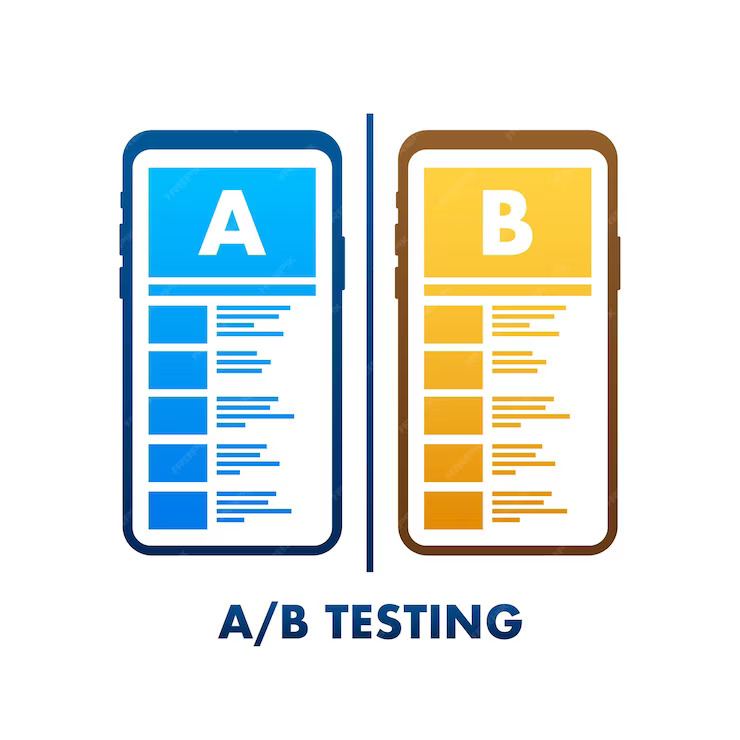
Testing Different Headlines
Try out various headlines to see which one resonates best with your audience. A small change here can lead to a significant increase in conversions.
Analyzing User Behavior
Use analytics tools to track user behavior on your landing page. Identify drop-off points and optimize those areas to keep visitors engaged.
FAQs
Q: How can I make my introduction more engaging?
A: Start with a hook, ask a thought-provoking question, or share a surprising fact. Anything that piques your curiosity can make your introduction engaging.
Q: What’s the best way to evoke emotion in my writing?
A: Use descriptive language, tell relatable stories, and connect with your readers on a personal level. Emotions are often conveyed through experiences and anecdotes.
Q: Should I always use contractions and colloquial language?
A: It depends on your audience and the tone you want to set. Contractions and colloquialisms can make your writing more approachable, but they may not be suitable for all content.
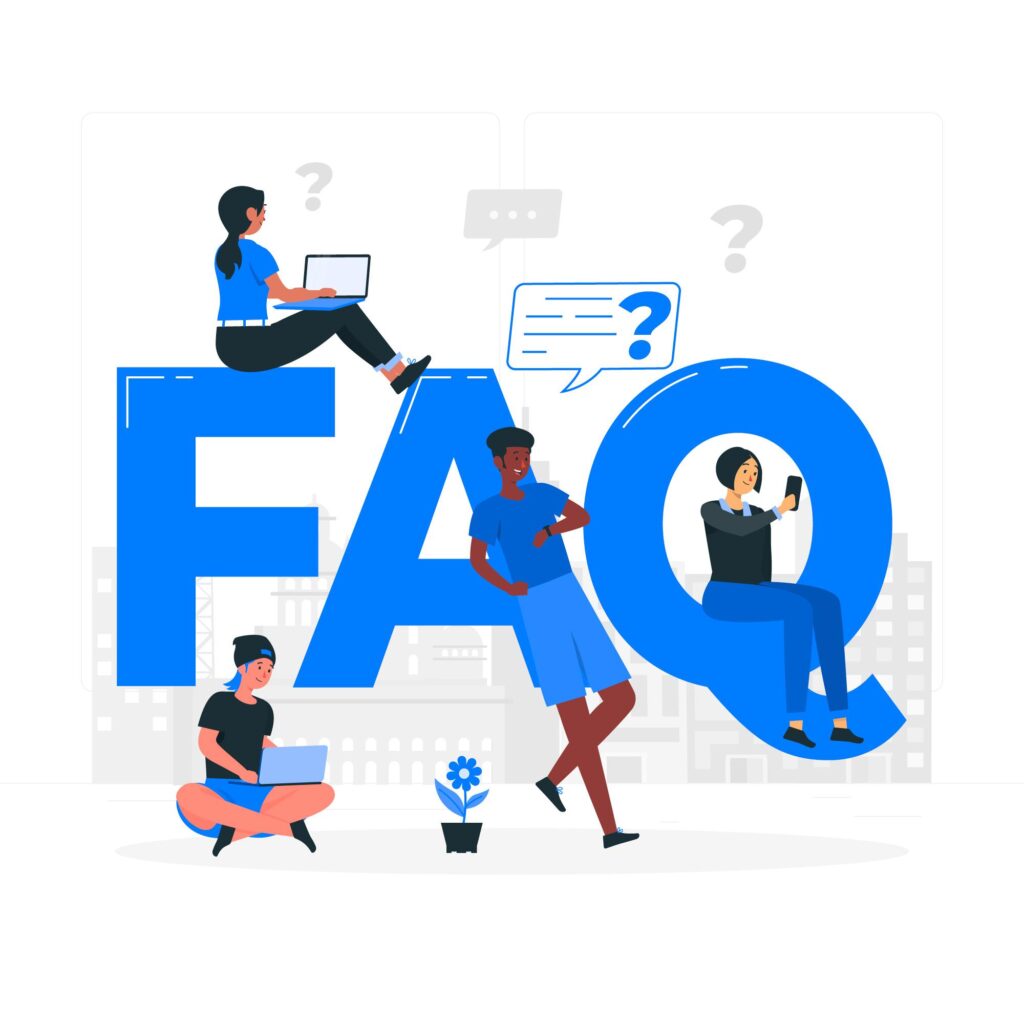
Q: How do I handle writer’s block?
A: Writer’s block can be overcome by taking breaks, changing your environment, brainstorming, or even discussing your ideas with someone else.
Q: Is revision really necessary?
A: Absolutely. Revision is where you refine your content, fix errors, and enhance engagement. It’s a crucial step in the writing process.
Q: Can I use humor to keep readers engaged?
A: Yes, humor can be a great engagement tool. Just ensure it’s appropriate for your audience and aligns with your content.
Conclusion
Crafting engaging content that keeps readers invested from start to finish is an art worth mastering. By implementing the strategies outlined in this article and experimenting with different techniques, you can become a writer who makes their audience say, “Continue writing please.”
Also Read: 10 Reasons Why Paid Advertising is Vital for Digital Marketing Success – Ennoble Technologies
10 Reasons Why Paid Advertising is Vital for Digital Marketing Success
In today’s rapidly evolving digital landscape, businesses need more than just a compelling website and engaging content to thrive. They need to invest in paid advertising to unlock their full potential in the digital marketing realm. In this article, we’ll explore the ten compelling reasons why paid advertising is absolutely vital for achieving digital marketing success.
Digital marketing has become the cornerstone of modern business strategies, and within this expansive field, paid advertising plays a pivotal role. In a world where competition is fierce and attention spans are fleeting, paid advertising offers a multitude of benefits that can significantly contribute to the success of any digital marketing campaign. In this article, we will delve into ten compelling reasons why paid advertising is vital for achieving digital marketing success.
Paid Advertising for Digital Marketing Success
1. Instant Visibility
Paid advertising, especially through platforms like Google Ads and social media ads, provides instant visibility to your target audience. Unlike organic methods, which take time to build up, paid ads ensure that your brand is in front of potential customers the moment they start their online journey.
2. Precise Targeting
One of the biggest advantages of paid advertising is the ability to precisely target your audience based on demographics, interests, behaviors, and more. This precision ensures that your message reaches those who are most likely to convert into customers.
3. Better ROI
Paid advertising, when executed with precision and a strategic approach, has the potential to deliver an exceptional return on investment (ROI). By meticulously planning and continuously optimizing your advertising campaigns, you can guarantee that each dollar invested in advertising yields tangible and measurable outcomes, such as an influx of high-quality leads, increased sales figures, or any other desired actions that align with your business objectives. The efficacy of paid advertising lies in its ability to generate substantial results while providing you with the flexibility to adapt and refine your strategies based on real-time data and insights. So why settle for mediocrity when you can leverage the power of paid advertising to drive unprecedented success for your business?

4. Enhanced Brand Awareness
The power of consistent exposure through strategically placed paid advertisements cannot be overstated. Not only do these ads drive immediate conversions, but they also play a crucial role in boosting brand awareness. When potential customers are consistently exposed to your brand, it creates a sense of familiarity and trust.
This increased trust leads to higher consideration of your brand when making purchasing decisions, ultimately resulting in increased sales and customer loyalty. By investing in paid ads, you can ensure that your brand remains at the forefront of your target audience’s minds, maximizing the impact of your marketing efforts.
5. Competitive Advantage
In today’s highly competitive digital marketplace, maintaining a strong edge over your rivals is absolutely crucial. One effective strategy to achieve this is through implementing paid advertising campaigns. By investing in paid advertising, you gain the power to outbid and outperform your competitors in search engine rankings and social media visibility.
This not only helps increase your brand’s online presence but also enhances the chances of attracting potential customers who are actively seeking the products or services you offer. With paid advertising, you can strategically position yourself above others in the crowded digital landscape, ensuring that your brand remains at the forefront of consumers’ minds.
6. Detailed Analytics
With the advent of paid advertising platforms, businesses now have access to a plethora of comprehensive analytics and insightful data. These platforms go beyond mere impressions and clicks, giving you a deep understanding of how your campaigns are performing. By leveraging these powerful tools, you can accurately measure the effectiveness of your advertising efforts.
The beauty of this data-driven approach lies in its ability to empower continuous improvement and optimization. Armed with valuable insights, you have the opportunity to make informed decisions that yield better results. This allows you to fine-tune your campaigns, allocate resources more effectively, and ultimately maximize your return on investment. Gone are the days of guesswork and relying on gut feelings. Thanks to paid advertising platforms, you can now harness the power of data to make strategic adjustments that align with your goals.
Whether it’s refining targeting parameters, optimizing ad placements, or crafting compelling ad copy – every decision can be backed by concrete evidence. In this digital landscape where competition is fierce, staying ahead requires constant monitoring and analysis. Paid advertising platforms equip you with real-time metrics that help you stay nimble in an ever-changing marketplace.
By keeping a close eye on key performance indicators such as click-through rates, conversion rates, and cost per acquisition – you have the agility needed to adapt quickly and outperform your competitors. In summary, paid advertising platforms provide not just a means for reaching your audience but also a powerful tool for measuring success accurately. The wealth of analytics and insights at your disposal enables continuous improvement and optimization – allowing you to drive better results for your business while staying one step ahead in an increasingly competitive landscape.

7. Adaptable Budgeting
Paid advertising offers flexibility in budgeting. You can start with a small budget and scale up as you see positive results. This adaptability allows businesses of all sizes to participate in digital marketing.
8. Mobile Optimization
In today’s digital age, where mobile devices have become an inseparable part of our lives, it is crucial to ensure that your content is not just accessible but also optimized for the ever-growing number of mobile users. Utilizing paid advertising strategies enables you to reach a vast audience on their smartphones and tablets, maximizing your visibility and potential customer engagement.
By investing in mobile-friendly ads, you are not only catering to the needs of the modern consumer but also enhancing their overall user experience. These ads are specifically designed to seamlessly adapt to various screen sizes, resolutions, and browsing behaviors. As a result, your content becomes more visually appealing and easy-to-navigate, capturing the attention of mobile users in a captivating manner.
Furthermore, with the majority of internet browsing now happening on mobile devices, leveraging paid advertising ensures that you stay ahead of the competition. It allows you to tap into a wide pool of potential customers who are constantly on-the-go and seeking quick solutions or answers through their handheld devices. In conclusion, incorporating paid advertising strategies that prioritize mobile optimization has become imperative in this era of increasing mobile device usage. By doing so, you can effectively enhance your reach and provide an exceptional user experience that sets you apart from competitors who may still be lagging behind in this aspect.
9. A/B Testing
Paid advertising presents a unique opportunity for businesses to not only reach their target audience but also test and optimize their marketing strategies. By incorporating A/B testing methods, advertisers can gain invaluable insights into what ad copy, images, or strategies resonate the most with their audience. With the constant influx of data provided by A/B tests, businesses can make data-driven decisions in real-time. This allows them to identify the most effective elements of their campaigns and continually refine them for maximum impact.
By constantly fine-tuning these variables, advertisers can ensure that their message is being delivered in the most compelling way possible. Furthermore, the ability to run A/B tests empowers businesses to experiment with different approaches and discover hidden opportunities that may have otherwise gone unnoticed. This iterative process not only enhances campaign performance but also fosters a culture of innovation within marketing teams. In a highly competitive marketplace where every click counts, utilizing A/B testing in paid advertising is no longer an option but a necessity. By harnessing the power of data-driven optimization, businesses can stay ahead of the curve and maximize their return on investment while delivering impactful messages to their target audience.
10. Immediate Results in Competitive Niches
In highly competitive niches, achieving organic search visibility can be incredibly challenging. Paid advertising provides a shortcut to securing a prominent position in search results, ensuring that your business doesn’t get lost in the noise.

FAQs
Q: How does paid advertising differ from organic marketing?
A: Paid advertising involves paying to display your ads, while organic marketing relies on unpaid methods like SEO and content marketing. Paid advertising delivers quicker results and more precise targeting.
Q: Can small businesses benefit from paid advertising?
A: Absolutely! Paid advertising is scalable and budget-friendly, making it accessible to businesses of all sizes. It can help small businesses compete effectively in the digital space.
Q: What platforms can I use for paid advertising?
A: Popular platforms for paid advertising include Google Ads, Facebook Ads, Instagram Ads, and LinkedIn Ads. The choice depends on your target audience and marketing goals.
Q: Is paid advertising suitable for e-commerce businesses?
A: Yes, paid advertising is highly effective for e-commerce. It can drive traffic to product listings, increase sales, and boost revenue.
Q: How do I measure the success of my paid advertising campaigns?
A: You can measure success through key performance indicators (KPIs) such as click-through rates (CTR), conversion rates, return on ad spend (ROAS), and cost per acquisition (CPA).
Q: Are there any risks associated with paid advertising?
A: While paid advertising offers numerous benefits, there is a risk of overspending if not managed properly. It’s essential to set budgets and monitor campaigns closely.
Conclusion
In the ever-evolving landscape of digital marketing, paid advertising remains a cornerstone for businesses aiming to achieve success. Its ability to provide immediate visibility, target specific audiences, and deliver measurable results makes it an invaluable asset. Additionally, paid advertising offers the flexibility to adapt, the power to build brand awareness, and the potential for global reach. When executed strategically, paid advertising can be the catalyst that propels your digital marketing efforts to new heights.
To achieve the best results, it’s essential to plan and execute your paid advertising campaigns strategically, ensuring that you connect with your audience effectively and stay ahead of the competition.
Also Read: Mastering the Art of Online Sales: Digital Marketing for E-Commerce Solutions – Ennoble Technologies
The Power of Online Reviews & Reputation Management
Introduction
In the digital age, where the internet reigns supreme, the influence of online reviews and reputation management cannot be underestimated. Consumers today heavily rely on the opinions and experiences shared by others before making purchase decisions. This article explores the significance of online reviews and the art of reputation management.
The Impact of Online Reviews
The New Word of Mouth
In this digital age, the landscape of recommendations has undergone a significant transformation. Online reviews have emerged as the new gold standard, effectively replacing the traditional “word of mouth” recommendation. Today, individuals eagerly turn to the vast expanse of the internet in search of valuable advice from complete strangers.
The power of online reviews cannot be underestimated. A single positive review holds immense potential for your business, acting as a powerful endorsement that can catapult your brand’s reputation to new heights.
When potential customers stumble upon glowing testimonials from satisfied clients, they are instantly reassured and inspired to engage with your products or services. Harnessing the persuasive impact of positive online reviews allows you to tap into a massive pool of potential customers who are actively seeking reliable guidance and trustworthy recommendations. By earning an abundance of positive feedback, you can cement your business as an industry leader and establish an unwavering sense of credibility among both existing and prospective clients.

It is crucial to recognize that in today’s competitive marketplace, consumers place tremendous trust in the opinions shared by other consumers online. A well-crafted review not only showcases the quality and value offered by your business but also fosters a sense of authenticity and transparency that resonates deeply with discerning individuals.
Embracing this paradigm shift by actively encouraging and engaging with customer reviews can prove instrumental in propelling your business forward. By consistently delivering exceptional experiences and encouraging satisfied customers to share their thoughts online, you create a virtuous cycle where positive endorsements attract even more clientele.
Therefore, it is evident that harnessing the power of online reviews holds great promise for businesses seeking to thrive in this digital era. The impact is undeniable: these testimonials offer profound social proof that influences purchasing decisions, establishes credibility within your industry, and ultimately solidifies your position as a trusted brand worthy of consideration.
Boosting Trust
Customers are more likely to trust the experiences of fellow consumers. A high number of positive reviews can help establish trust, making your business more appealing to potential clients.
Search Engine Visibility
Search engines, like Google, consider online reviews in their ranking algorithms. Positive reviews can improve your website’s visibility and bring in more organic traffic.
Reputation Management: The Art of Shaping Perceptions
Proactive vs. Reactive
Reputation management can be proactive or reactive. Proactive management involves taking steps to build a positive image from the start. Reactive management deals with addressing negative feedback and restoring your reputation.
Social Media Presence
Active engagement on social media platforms is vital. Responding to comments and feedback in a friendly and professional manner can work wonders for your reputation.

Monitoring and Assessment
Regularly monitor what people are saying about your business. Tools and services can help track mentions and provide insights into customer sentiment.
The Benefits of Effective Reputation Management
Increased Credibility
A well-maintained reputation adds credibility to your brand. People are more likely to trust a business with a positive online presence.
Competitive Edge
Outshine your competitors by actively managing your reputation. A good reputation can give you an edge in a crowded market.
Customer Retention
Happy customers are more likely to return and become loyal clients. Effective reputation management can help build a loyal customer base.
Strategies for Handling Negative Reviews
Stay Calm and Collected
When faced with a negative review, remain composed. Responding angrily or defensively can worsen the situation.
Address the Issue
Acknowledge the problem and show a willingness to resolve it. This can turn a negative experience into a positive one.
Encourage Positive Reviews
Encourage satisfied customers to leave positive reviews. This can help balance out any negative feedback.
Conclusion
In today’s digital world, online reviews and reputation management are powerful tools that can make or break your business. Positive reviews can drive trust and growth, while effective reputation management can maintain your credibility. Embrace the power of online reviews and master the art of reputation management to thrive in the digital era.
Frequently Asked Questions

Q: How do online reviews impact search engine rankings?
A: Online reviews can positively influence your search engine rankings. Search engines like Google consider them as a trust signal, potentially boosting your website’s visibility in search results.
Q: What is the difference between proactive and reactive reputation management?
A: Proactive reputation management involves building a positive image from the start, while reactive management deals with addressing negative feedback and restoring your reputation after a crisis.
Q: How can I encourage customers to leave positive reviews?
A: You can encourage customers to leave positive reviews by providing excellent service, asking for feedback, and making the process of leaving reviews simple and convenient.
Q: Are all negative reviews harmful to a business?
A: Not necessarily. Negative reviews can provide opportunities for improvement. When handled properly, they can actually enhance your business’s reputation by demonstrating your commitment to customer satisfaction.
Q: What are some effective strategies for social media reputation management?
A: Effective social media reputation management involves active engagement, timely response to comments and feedback, and the use of analytics to understand customer sentiment and trends.
Read More: Local SEO for Clinics & Private Practices – Ennoble Technologies
Maximize Your Reach with PPC Advertising
In today’s online world, every marketer needs to know the ins and outs of PPC advertising to reach their maximum potential. PPC, which stands for pay-per-click, is one of the most common ways of driving traffic to online businesses and websites. During this process, advertisers spend money on specific keywords relevant to their target audience. The ads thus put up will appear on the search engine result pages, for example, on Google and other platforms where the advertiser is paying for them. Each time a person clicks on an advertisement, the advertisers will pay a certain amount of money to the platform to generate those viewers.
For a more comprehensive example, imagine a person searching for “dentist near me” or “cupcakes near me.” These types of searches are more likely to trigger pay-per-click ads. Upon such searches, Google will provide the relevant information on its page and display the websites of those at the top who have paid for advertising. Thus, a person looking for relevant material will naturally click on it to ease their search.
The workings of PPC advertising

Many people might question how one gets their ad listed at the top, so it is the first thing to catch the potential customer’s attention. However, this determination is in the hands of a subject known as the ad auction. It is an entirely automated process that no one can gain control over, and Google and other major search engines use it to evaluate the relevance and legitimacy of ads that show on their SERPs. Therefore, one cannot simply pay more to have their ad listed at the top; instead, it is more of a curatorial endeavor.
To effectively maneuver through this endeavor, the advertisers first sought to identify the most common and relevant keywords a potential customer might search for when searching for their product. The keywords make or break the success of the advertisement. After this step, the advertisers curate their ad campaign by allocating the ad budget, targeting options, ad copy and focusing on the landing page URLs.
Then the advertiser participates in the keyword auctions and places their amounts on the chosen keywords; thus, when a user enters a specific keyword, the search engine will run its auction first to determine which ad it should display. The likelihood of the ad being displayed is not entirely controlled by the bidding amount but is somewhat influenced by it.
The actual cost per click is not the same as the bidding amount; it is lower instead and is determined by the maximum amount the next bidder is willing to pay and the ad’s quality score.
Advantages of PPC advertising:

There are various reasons why PPC is the most common and primary method of generating leads for a business, and below are some of the key points:
- Quick results: PPC generates immediate results for brands compared to organic methods like SEO. As soon as the campaign is set up, the ads will appear on the search result pages, and people will be led to your website.
- Flexibility of budgeting: With PPC, advertisers can control their budget and set their limits for advertisement funding. This helps because high-end companies will not dominate the SERPs, and businesses on a smaller scale will also be given the chance to participate in them.
- Performance Tracking: Search engine platforms where the advertisement is displayed can provide a detailed performance metric that helps businesses successfully track the effectiveness of their campaigns. Constituent metrics like clicks, impressions, Click-Through Rate (CTR), conversions, and Return on Investment (ROI) are data factors that can be analyzed to make better and more informed decisions.
- Builds up brand visibility: Repeated exposure of a brand through ads, even if people do not click on them, still increases brand visibility and awareness in customers’ eyes. Therefore, the customers might recall the product when they need it later.
Optimize your PPC ads

Marketers must optimize their ads for the best possible performance to ensure a high return on investment. Some of the crucial strategies are:
- Make sure to put the most focus on your keyword strategy. Identifying high-performing keywords with lower competition and higher conversion rates is an essential step. On the flip side, your list of negative keywords should also be updated. Negative keywords are terms for which your ads should not appear; this helps increase your ads’ relevance and Click-through rate.
- Optimizing the landing page is another essential step, wherein your landing pages are aligned with your ad copy and keywords. The landing page’s content is optimized, as is its design for conversion; all these factors make it easier for the customers to take further actions.
- Make use of the geotargeting feature if your business serves a specific location. With its help, you can seamlessly display your ads in the target areas. This helps by offering your ads only to the most relevant people.
Conclusion:
In conclusion, PPC advertising is a powerful tool that can effectively maximize your reach and drive significant results for your business. By leveraging targeted keywords, engaging ad copy, and strategic bidding, you can increase visibility and attract relevant traffic to your website. Ennoble Technologies, the best digital marketing agency in Hyderabad, understands the intricacies of PPC advertising and can help you create and manage successful campaigns to achieve your business goals. Contact us today to take your digital marketing efforts to the next level.
Also Read: Track Your ROI: Measure the Success of Your Digital Marketing – Ennoble Technologies
Track Your ROI: Measure the Success of Your Digital Marketing
It is essential to understand how to measure digital marketing ROI accurately to check the effectiveness of your digital marketing efforts. Active monitoring is crucial in today’s digital landscape, where businesses invest many resources to increase audience reach. Or there’s no way one can guarantee their efforts and time will be fruitful. Optimizing your strategies for better results requires real-time data, which can be gained through tracking ROI. Explore the importance of ROI and various methods to determine the success of your digital marketing.
Why is tracking ROI so Important?

Tracking digital marketing ROI provides insights that are valuable in several ways. They help determine the effectiveness of your campaigns. Here are a few reasons why tracking ROI is essential:
Cost optimization: With ROI results, you can find areas where costs can be optimized. One can ensure their marketing budget is spent properly and efficiently only on the essential areas. This allows them to use the resources to create campaigns that deliver the best return without struggling much.
Informed decision: By measuring, you can gather data to help make better, data-based decisions. It becomes easy to know which marketing methods will provide the highest returns. Moreover, you can favorably use your budget.
Performance: It shows directly and clearly whether your marketing techniques are working. It lets you know if your previous actions have successfully generated satisfactory returns and met your business goals.
Measure the Success of Your Digital Marketing
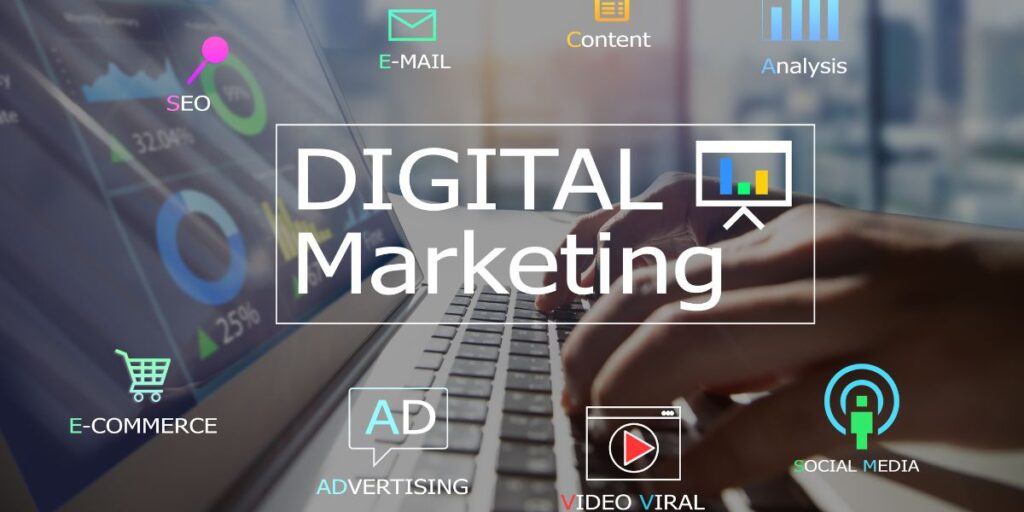
Here are some ways to measure the success of your digital marketing:
Cost per Acquisition (CPA)
CPA is used for calculating the average cost required to get a customer. For instance, many would claim to be Hyderabad’s Best Digital Marketing Services. However, using this CPA method, you can quickly check if they can offer the best services at a competitive rate. With the CPA, you can decide if their campaigns have been cost-effective.
Website Traffic
The number of visitors you get to your website over a specific period can tell many things. To assess how effective one’s digital marketing methods have been, calculating the total number of visitors can significantly help. Analyze trends, and check bounce rates and referral sources as well.
Use Analytics Tools
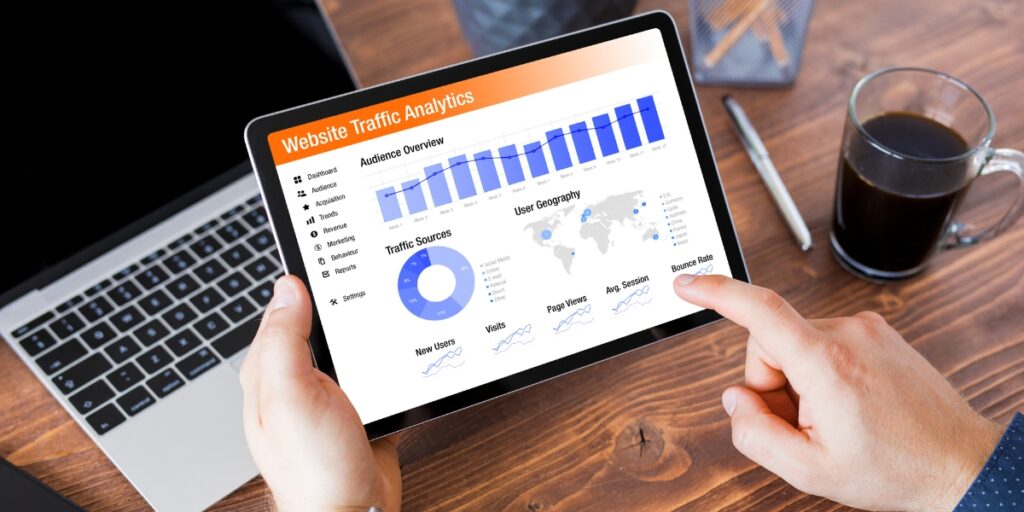
Tools like web analytics, tracking codes, and attribution models are essential for measuring digital marketing success. They help collect valuable data on website traffic and user behavior. You can find all the answers you have been looking for using tools like Google Analytics on your website.
Conversion Rates
How many visitors purchased or used your products? The percentage of people who did take any action, such as buying your services, filling out a form, or subscribing to your newsletters Conversion rates, whether high or low, indicate your efforts and techniques’ efficiency. Also, would they need to change or continue to work?
Social Media Engagement
Monitor the engagement rate on your company’s social media. The number of likes, comments, shares, mentions, or referrals you receive over a specific period Higher engagement rates suggest your audience has increased and found the shared content helpful. Lower engagement rates could mean you still need to make improvements.
Check Return on Ad Spend
Return on ad spend, or ROAS, is another helpful method. If the revenue generated for the money spent on advertising campaigns is higher, you’ve made a good decision. However, if your ROAS is low, your campaigns have failed to perform well.
Email Marketing Metrics
Assessing the performance of your email marketing strategies is as important as checking other areas. Metrics such as open rates, click-through rates, and conversation rates provide information about the effectiveness of your email communications.
Search Engine Rankings
Track your website’s ranking on search engine results pages (SERPs) for targeted keywords. Let’s say you are offering Digital Marketing Services in Hyderabad. However, customers won’t be able to reach you unless your pages are designed and ranked for those specific keywords. The higher one’s website ranks, the more visibility and organic traffic it gets.
Conclusion
Tracking return on investment (ROI) is vital to measuring success in the digital marketing industry. It wouldn’t be enough unless you actively measured the performance and analyzed the data correctly. With limited resources and time, achieving better returns on your investments is possible. However, it’s not a one-time process. For long-term success, it requires continuous monitoring and making accurate decisions based on data, not instincts.
Ennoble Technologies, a trusted digital marketing agency in Hyderabad, stands out as a beacon of excellence in the ever-evolving digital landscape. With a relentless commitment to delivering remarkable results, Ennoble Technologies has carved a niche for itself as a reliable partner for businesses seeking to enhance their online presence and achieve remarkable growth. Their team of skilled professionals brings a wealth of expertise in various digital marketing domains, including search engine optimization (SEO), pay-per-click (PPC) advertising, social media marketing, and content strategy. By harnessing the power of data-driven insights and innovative strategies, Ennoble Technologies empowers businesses to reach their target audience effectively, drive meaningful engagement, and generate measurable success. With their unwavering dedication to client satisfaction and a proven track record of delivering exceptional results, Ennoble Technologies continues to elevate businesses to new heights in the digital realm.
Also Read: Social Media Marketing: Connect, Engage, and Grow – Ennoble Technologies
Social Media Marketing: Connect, Engage, and Grow
Nowadays, when everyone, from consumers to sellers, lurks on the internet most of the time, it has become necessary for every brand to market itself on relevant social media platforms. Social Media Marketing is a blessing for brands, as it allows them to directly connect with their target audience and interact with them for a better relationship.
This is done by creating original content that advertises their products and sharing it on social media platforms like Facebook, Instagram, Twitter, LinkedIn, and others. This helps attract a user to their page, boosting traffic and brand awareness, and consequently generating leads or sales. Social media marketing allows sellers to leverage the power of social media platforms to connect businesses with their target audience without overtly making it seem like advertising. Let’s read more about how social media marketing works to connect, engage, and grow a business.
Social Media Engagement

The process of social media engagement involves creating the content, scheduling its release, and monitoring the target audience’s response to the said content. This allows the brand to understand the consumers’ views while staying in touch with them, giving it the shape and feel of an empathetic business. This aspect of marketing also involves handling all facets of a social media presence, including how to present themselves on the platform and how to interact with the audience; it also includes planning and executing strategies and analyzing the performance of the implemented systems. This process also accounts for a very crucial step, which is brand management. Reviews of the brands, whether positive or negative, will be shared by the customers, and this will need to be monitored and addressed by the employees to protect the brand’s reputation.
Now, one might wonder how to increase social media engagement organically, and for this, businesses need to understand that it is not so much about the quantity as about the quality of their content. This means that having a presence on all social media platforms is optional to increase engagement, just as focusing on a few essential platforms is. The second most straightforward method is asking your audience questions and releasing surveys. This works in two ways: it provides businesses with the information they need to improve their products and prompts the audience to interact with the brands.
Businesses that wish to grow their audience exponentially should go the extra mile by understanding their audience’s demographics, interests, and preferences, using which they can tailor their content accordingly. Thus, creating relevant and compelling content is another aspect of the whole process. Using a mix of formats such as images, videos, interactive content, and another very suitable method is using famous memes and trends, which allow businesses to stay updated with their customers.
Organizing giveaways is another very viable method of attracting engagement. This is done by partnering with influencers or industry experts who help market the business to their audience and prompt them to participate in their contests in the hopes of winning free goods. This method works in many ways, as it also introduces the business to other people who may have never heard of it, and even if they do not participate or win, they might keep in touch with the company and purchase it later.
Benefits of Organic Social Media:

Building an organic social media base for your business has substantial positive impacts. Especially with the advent of third-party apps that help anyone gain up to thousands of fake followers by spending a few bucks, a business must stand out with its transparency.
One of the most significant benefits of having organic followers on social media is that Google will boost your search engine rankings. This means that whenever someone looks up something similar to what your business offers, chances are that your brand name will be in some of the top positions of the results. Consumers highly value the credibility offered by Google. Therefore, another consequence and benefit of this is being able to receive more traffic than ever on your website, which will eventually boost your sales.
Tips for Social Media Marketing
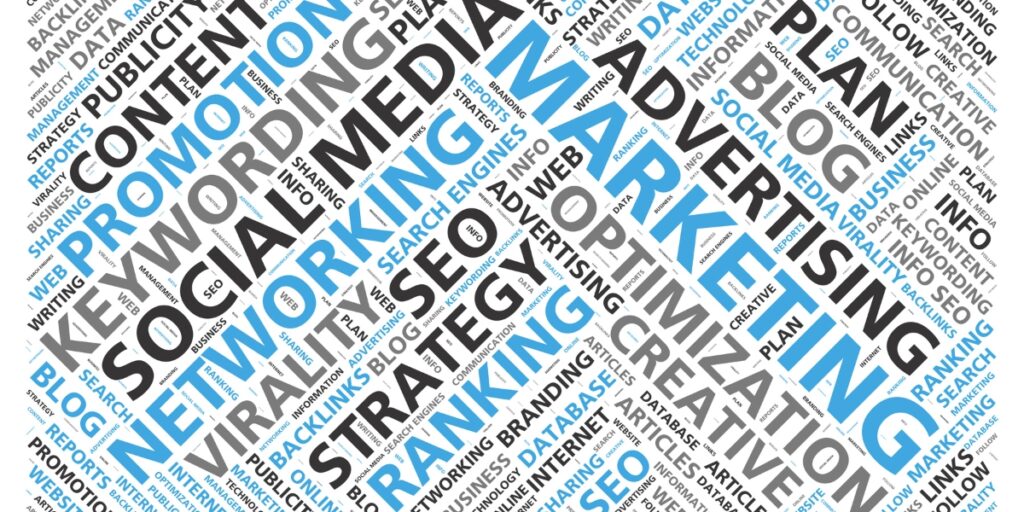
In conclusion, all businesses should set up their own social media marketing team since it is one way of generating leads with the most potential with respect to current shopping and consumption trends. Here are some tips that help marketers organize those aspects that might have gone unnoticed:
- Set a goal: This might seem redundant at first. After all, everyone’s dream is to grow the audience. Nonetheless, having small plans helps reach the bigger goal faster and more efficiently. Thus, baby steps like increasing one’s follower count by 10% on Twitter are excellent examples.
- Post consistently: This is one of the most important yet overlooked aspects of marketing on social media. Many strategists believe that releasing top-notch content once in a while will help, but that’s not the prime factor that keeps the audience hooked or engaged. It is necessary that the team be consistent with their schedule to catch their audience’s fleeting interests.
Ennoble Technologies is known for offering a range of digital marketing services to clients, including search engine optimization (SEO), social media marketing, pay-per-click (PPC) advertising, content marketing, web design and development, and online reputation management. We aim to help businesses improve their online presence, reach their target audience, and generate leads or sales. Get in touch with our team if you are looking for expert advice.
Also Read: Master the art of Professional Digital Marketing Services for Business Growth – Ennoble Technologies
Master the art of Professional Digital Marketing Services for Business Growth
In today’s digital age, where online presence plays a crucial role in business success, mastering the art of professional digital marketing services is essential. Digital marketing strategy is an ever-evolving field that requires businesses to stay up-to-date with the latest trends and strategies.
Implementing effective digital marketing strategies can significantly contribute to business growth, enhance brand visibility, and drive customer engagement. This article will explore key principles and practices that can help you excel in the realm of digital marketing, empowering your business to thrive in the competitive landscape.
Define Your Objectives
For instance, imagine you have an e-commerce store that sells eco-friendly clothing. Your objective could be to increase website traffic and generate more online sales. To achieve this, you might focus on implementing an SEO strategy to improve your website’s search engine rankings and drive organic traffic. Having the objects set correctly is extremely important for a business. This gives you a sense of direction for all your business actions.
Understand Your Audience
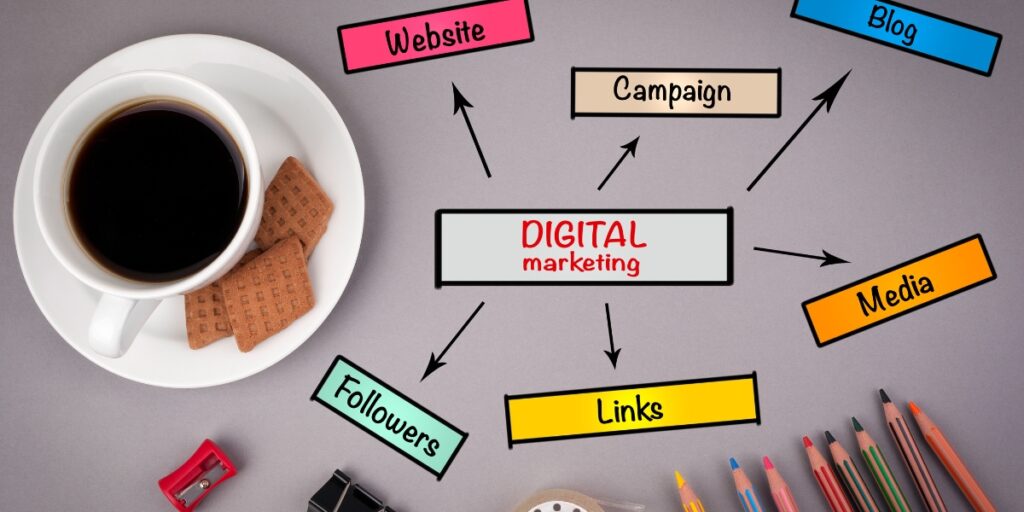
One of the fundamental aspects of successful digital marketing is understanding your target audience. Thorough market research and data analysis allow you to gain insights into their demographics, preferences, and behaviors. By understanding your audience, you can tailor your marketing campaigns to effectively engage and resonate with them, leading to higher conversion rates and customer loyalty.
Suppose you run a fitness blog targeting millennials who are interested in wellness, fitness, and healthy eating. Understanding your audience can help you tailor your content strategy to resonate with them. You could utilize contemporary examples like TikTok challenges or Instagram Reels to create engaging and shareable videos that inspire your target audience to adopt a healthier lifestyle.
Develop a Comprehensive Digital Marketing Strategy

A well-defined digital marketing strategy acts as a roadmap to guide your efforts towards achieving business goals. Start by identifying specific objectives, whether it’s increasing website traffic, generating leads, or improving brand awareness. Leverage various digital channels such as search engine optimization (SEO), social media marketing, content marketing, email marketing, and paid advertising to reach and engage your target audience. Your strategy should encompass a cohesive approach that maximizes the impact of each channel while maintaining consistency across platforms.
For instance, according to an online research platform, Airbnb revolutionized travel and lodging. Founded because its founders couldn’t afford their rent, the site now has 100 million members, 2.3 million postings, and a total valuation of $31 billion.
As part of their digital marketing strategy, they aimed to attract both tourists and hosts to their platform. The company’s digital marketing strategy emphasizes user-generated content on Facebook, Instagram, and Twitter (highlighting the cities and properties that it manages), how-to videos and articles for owners, and popular city guides. It’s not just a service, but also a forum for travel, as their Instagram ad combines humor and fascinating images of destinations around the world.
Airbnb is one of the most prominent social media stars. A 2015 Instagram campaign generated 13.3 million interactions and saw a 341 percent increase in followers.
Optimize Your Website and User Experience

Your website serves as the digital storefront for your business. It is crucial to optimize it for the user experience and search engines. Ensure your website is visually appealing, mobile-friendly, and easy to navigate. Implement on-page SEO techniques like optimizing meta tags, using relevant keywords, and improving page load speed. A seamless user experience coupled with a well-optimized website enhances credibility, increases conversions, and improves search engine rankings.
For example, if you own a local bakery and want to increase online orders, you can optimize your website for local searches. This involves incorporating location-specific keywords in your content, registering your business on Google My Business, and encouraging customers to leave positive reviews.
Engage with Compelling Content
Content lies at the core of digital marketing. Develop a content strategy that aligns with your target audience’s interests and needs. Create high-quality and engaging content in various formats such as blog articles, videos, infographics, and podcasts. By providing valuable and relevant content, you can establish your business as an authority in your industry, foster trust, and drive organic traffic to your website.
For example, let’s say you’re a fashion brand catering to Gen Z. To leverage social media content effectively, you can partner with popular influencers who align with your brand values, brand voice and have a strong presence on platforms like Instagram and TikTok. They can feature your products in their posts or videos, reaching a wider audience and driving traffic to your website. And you too can feature them in your posts which will enhance your brand content and credibility.
Leverage the Power of Social Media

Social media platforms offer immense opportunities for businesses to connect with their audience, build brand awareness, and drive engagement. Identify the social media channels that align with your target audience and develop a consistent presence. Create compelling content tailored to each platform, foster meaningful conversations, and actively engage with your followers. Utilize social media advertising to expand your reach, target specific demographics, and drive conversions.
Suppose you manage a software company targeting small businesses. An effective contemporary example of paid advertising could be running Google Ads that appear at the top of search results when users search for relevant keywords like “small business accounting software.” This helps you reach a highly targeted audience actively searching for solutions like yours.
Embrace Data-Driven Decision Making
Digital marketing agencies provide a wealth of data and analytics services that can inform your decision-making process. Leverage tools like Google Analytics and social media insights to track the performance of your campaigns, measure key metrics, and identify areas for improvement. Make data-driven decisions to refine your strategies, optimize your marketing efforts, and achieve better results over time.
Conclusion
Mastering the art of professional digital marketing services is a powerful asset for business growth in today’s digital landscape. By understanding your target audience, developing a comprehensive strategy, optimizing your website, creating engaging content, leveraging social media, and embracing data-driven decision making, you can position your business for success. By leveraging contemporary examples like influencer marketing, and location-based optimization, you can stay ahead of the rapidly evolving digital marketing landscape and achieve sustainable growth.
Stay adaptable, keep up with industry trends, and continuously refine your digital marketing efforts to stay ahead of the competition and drive sustainable business growth.
In the bustling city of Hyderabad, where business opportunities are abundant, having a reliable digital marketing agency by your side can make all the difference. Ennoble Technologies is a leading digital marketing agency in Hyderabad that specializes in providing comprehensive and innovative solutions to help businesses thrive in the digital realm. With a dedicated team of experts and a client-centric approach, Ennoble Technologies is committed to delivering exceptional results and empowering businesses to achieve their goals. Do you want to turn the tables on your business by implementing digital marketing strategies? Your goals are in good hands with us. Let’s get started today.
Read More: A Comprehensive Guide to Email Marketing – Ennoble Technologies
A Comprehensive Guide to Email Marketing
Email marketing has long been a cornerstone of successful digital marketing campaigns. It offers a direct and personalized way to connect with your audience, drive engagement, and achieve business objectives. Being an essential part of any business’ marketing strategy, it has been proven to be one of the most effective ways to reach your customers and prospects. But it can be easy to get lost in all the jargon and technical details associated with email campaigns.
However, creating effective email marketing campaigns requires careful planning, strategy, and a deep understanding of best practices. In this comprehensive guide, we will walk you through the key elements of email marketing, from building your subscriber list to crafting compelling content, optimizing deliverability, and measuring campaign success.
This guide will cover everything you need to know about how email marketing works, from building an effective strategy through design best practices and campaign execution. Get ready to unlock the full potential of email marketing and take your digital marketing efforts to new heights.
The Benefits of Email Marketing

There are many benefits to email marketing. The first and most obvious is that you can use it to keep in touch with your customers. If a customer buys something from you, they will likely want updates and information on new products or services that you may offer. Email is a great way of providing this information because it gives them the opportunity to opt in or out of receiving future communications from you (which means they will only receive emails when they want too). Another benefit is providing exclusive offers only available through email marketing campaigns. For example, if someone has bought something from one of your competitors but then decides to shop at another store later in the week – sending them an offer for 20% off their next purchase could encourage them to come back!
Finally, there’s building brand awareness, which helps build trust over time between consumers/prospects towards buying from particular brands rather than just any old company selling similar products/services under different names, which wouldn’t necessarily know anything about each other unless there was some kind of partnership agreement beforehand (which requires lots of effort).
How to Develop an Email Marketing Strategy
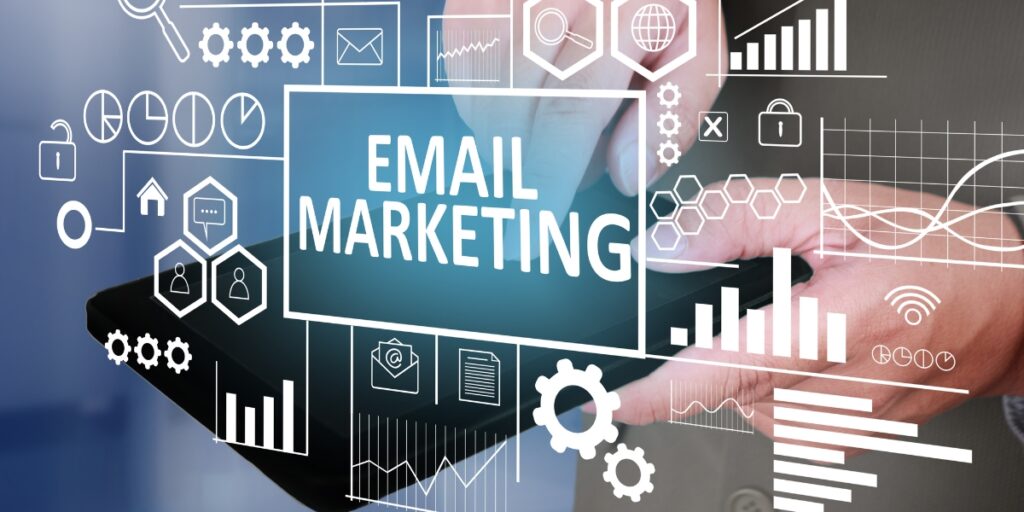
Start by thinking about your audience. Who are you targeting, and why? Are there people who are more likely to buy a product or service than others, and if so, why? What do they like in an email campaign that makes them more likely to open it and engage with it?
Think about what you want to achieve with the email marketing strategy–and how this might be different from other strategies that you have developed for other channels (such as social media). This will help ensure that the strategies complement each other rather than overlap or conflict. For example: “Our Facebook page has 2 million followers; if we can get them all on our list through ads on Facebook, then maybe we don’t need any other sources.” But if those followers aren’t interested in what you’re selling, then no amount of advertising will make up for that mismatch between content/offer/target audience.
How to Build Your List
The more subscribers you have, the better. This can be a challenge in itself, but if you’re able to build your list with opt-in forms and get people signing up for your newsletter or email updates, it will make it much easier for you to send out content that gets read.
It’s important to make sure that any signup forms are easy for readers to find and use–don’t hide them behind other links or pages! You want them right at the top of each page so that anyone who visits can sign up without having to look around too much first (and then forget about doing so).
How to Design Your Emails

Design is important, but it’s not everything. The importance of designing for mobile is critical. The only way to do this effectively is through testing and iterating your design until you come up with something that works. Once you have a winning template, use it everywhere!
How to Write Effective Subject Lines and Introductory Text
Your subject line is the first thing that people see when they open your email, so it’s important to get it right. A good subject line should be short, simple, and compelling–and don’t forget to include a call-to-action!
Here are some examples of bad subject lines:
“This Is Important” (too vague)
“Subject Line” (too obvious)
“Please Read This Email” (boring)
How to Send and Track Your Campaigns
Use an email marketing service.
Track opens and clicks.
Track unsubscribes and bounces.
Takeaway:
You should now be equipped with an understanding of what email marketing is, the various channels that can be used for it, and the benefits it provides. You should also have an idea of how to go about creating your first campaign.
If you’d like more information on how to get started with email marketing or if there’s anything else I can help with, please feel free to contact me at [email protected].
Conclusion
Email marketing remains a powerful tool for businesses of all sizes, offering a direct line of communication to engage and convert your audience. By following the strategies, best practices, and success tips outlined in this comprehensive guide, you can create highly effective email marketing campaigns that drive results. Remember to continuously test, optimize, and analyze your campaigns to adapt to changing consumer preferences and improve your email marketing ROI. Embrace the potential of email marketing, and watch your business thrive in the digital landscape.
Also Read: SEO Content Writing with AI: Possibilities & Problems Explored – Ennoble Technologies

